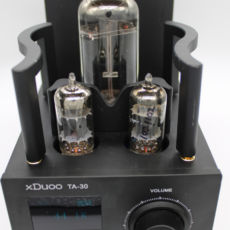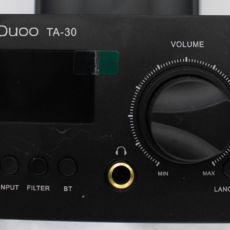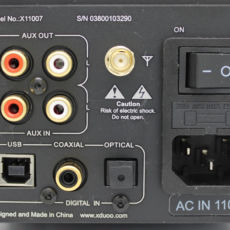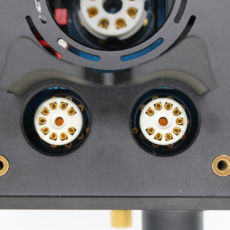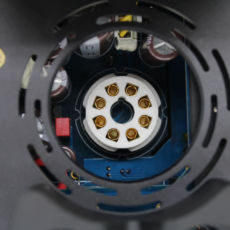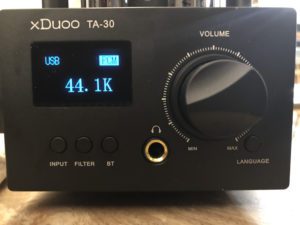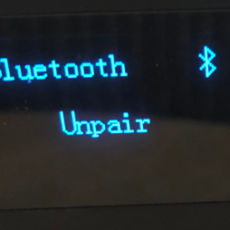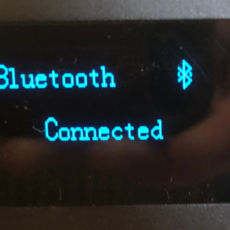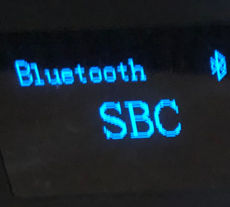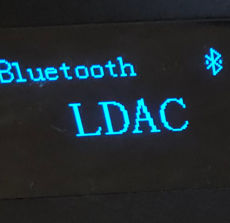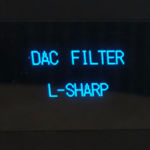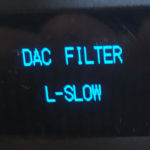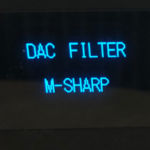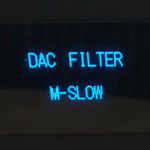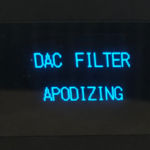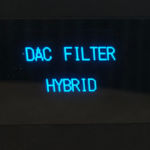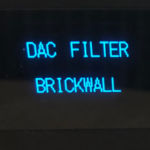Xduoo Ta-30
disclaimer: The Ta-30 was provided for the purpose of this review and the tube rolling article by Xtenik Audio. If you have an interest in purchasing any of the Xduoo amplifiers I have recently written about, I suggest you check out Xtenik’s website and follow them on facebook for more information. I have no financial interest in Xtenik, nor did I receive any compensation beyond the product itself for reviewing it.
Unboxing / Packaging:
The Ta-30 is a heavy unit so is packaged accordingly and the box is much more designed for transport/travel than for retail sales. Typical Cardboard with heavy closed cell foam surround the amp itself while the cables and tubes come packed in a smaller box again with heavy foam surrounds around the tubes. My unit made its journey from China to the US without so much as a scratch on the outer package so I think it was well handled, but I have no doubt that it would have taken fairly substantial abuse to have caused any problems to the internal unit.
Build/Fit:
The outer case is anodized aluminum in a flat black. Going around the amp, the front plate (left to right) has the LED Screen over 3 buttons on the left followed by the 6.35mm headphone jack, nad then the volume knob and language button on the right. The three buttons under the main screen control source (input), filter settings, and Bluetooth on/off respectively. The Screen shows input on the upper left, file type on upper right, and then centered beneath them is the bit rate and Sampling rate information. The sides are black powder coated with no controls or slots. The rear (left to right) has USB, coaxial, and optical inputs followed by the power connector on the bottom row and auxillary input and output RCA jacks, the bluetooth antenna, and the on/off switch on the upper row. A .25A 250V fuse is housed between the power connector and Switch with a spare hiding inside the housing as well. The power supply is listed as 110-240V capable and is auto-sensing as no external switch exists for setting input voltage. The top of the unit has the tube sockets in the front for the 12au7 pre-amp tubes, followed by a single larger socket for the 5u4g tube rectifier and then an output transformer that is roughly the full width of the unit at the rear. Tubes can be protected with two optional rails that plug-in to the top of the unit using a banana plug style connector.
Internals:
The TA-30 is a jack of all trades. DAC functionality alone can be used by using the usb, coaxial, optical or bluetooth input and the auxillary output. Amp alone function can be achieved by using the Auxillary input, or a combination of both can be used as well. Looking first just at the inputs, USB Input is managed by an XMOS XU208 chip which allows up to 32bit/768KHz PCM input or DSD512 (This is limited on android to 32/384 and DSD128 as the upper levels are only available when a PC driver is used in conjunction with the Ta-30). Coaxial and Optical inputs are limited to 24/192 and DSD64 comparatively. Bluetooth is handled by a Qualcomm CSR8675 chip with support for AAC, AptX, AptX-HD, and LDAC in addition to SBC. Clocking is handled by dual crystal oscillators at 49.152mhz and 45.158mhz respectively. All of this is managed by a Altera Max II programable logic chip that at least in theory should be capable of being updated via software if needed.
The Ta-30 utilizes the 9038Q2M ESS chip to handle DAC functions. This is the 2 channel version of the 9038 and is at this point considered a sub-flagship model just beneath the 9038pro. The Ta-30 does a good job of exposing the filters built into the chip as they can readily be changed via the controls on the front of the unit. The signal next travels to the LPF circuit and then to the pair of 12ua7 pre-amp tubes. Since each channel passes through one or the other pre-amp tube, it is necessary to use a reasonably closely matched pair of tubes, but since both triodes are used, the individual sections need not be closely matched as long as the overall is. This is a bit more lenient than the single tube models where balance between internal sections is more critical. Once the 12au7 handles the voltage amplification, the signal travels to a solid state current amplification circuit and finally to the output transformer before arriving at the headphone jack.
Astute readers will notice that I did not mention the 5z3p tube in that path because it isn’t. The 5z3p is a tube rectifier used in conversion of AC to DC and not directly involved in signal amplification. Instead, it provides clean DC power to the components in the signal path. For more information on the tubes used in the Ta-30, see my tube rolling the Ta-30 article which begins with a discussion of what exactly the rectifier does, and then continues with discussion of pre-amp and rectifier options for use in the Ta-30. (As a side note, the tube article will take a bit longer to complete as I am testing no less than 10 different rectifier tubes in the process so it may not be available the day the review is released.
Output power on the Ta-30 is huge and I mean staggeringly huge. With the ability to deliver 3 Watts into a 32Ω load, and 2 Watts into 150Ω, the Ta-30 is right at home with some of the world’s most notoriously hard to drive headphones. It had no problem handling the 600Ω Beyer and AKG models, powered the He560 to earsplitting levels with plenty of headroom, and even the He6se leaves you with plenty of volume knob left when driven to normal listening levels (75dB).
Controls:
All the controls are handled by 4 buttons on the front face. Three to the left of the volume knob and one to the right. For a lot of us, we will need the one to the right first as this button sets the language which defaults to Chinese. Current options are either Chinese or English and with my skillset being far greater in the later of the two, I quickly switch to English and went on from there.
The three buttons to the left are input type which when pushed cycles through USB, Coax, Optical, Bluetooth, and Aux in that order. The Second is the filter button which is discussed in more detail below, and the third is the bluetooth button. That one needs its own discussion as well.
Bluetooth:
I have to admit, I am not a big fan of this combination as I think combining bluetooth and tubes is asking for interference. Having said that, I did find that bluetooth worked well on the Ta-30 and I didn’t notice any distortion or interference with the tubes when using the wireless input. Controls for Bluetooth are a little counter-intuitive though, so some explanation is needed. To switch to bluetooth input,you first have to press the input button until the screen displays bluetooth. Once arriving at that screen, you can now pair your device with the Ta-30. Until switched into BT mode, devices will not pair. Once in BT Mode, pairing will display connected and briefly display the connecting protocol before going to a “connected” display. The BT button can now be used to disconnect the currently paired device to allow for device switching.
Sound:
Sound is tough to discuss on any DAC/Amp as it often is more a matter of source material and headphones that influence what we hear. This is even more complicated when dealing with a tube amp where changing the tubes for different ones may have an impact on the sound. I did quite a bit of tube rolling with the Ta-30 and have documented that in a separate article so discussion here is limited to the device as it ships with the factory supplied tubes.
Filters:
The DAC filters are exposed via a button on the front panel and can be selected by tapping the button once to switch the filter screen and a second time to change to the next in sequence.
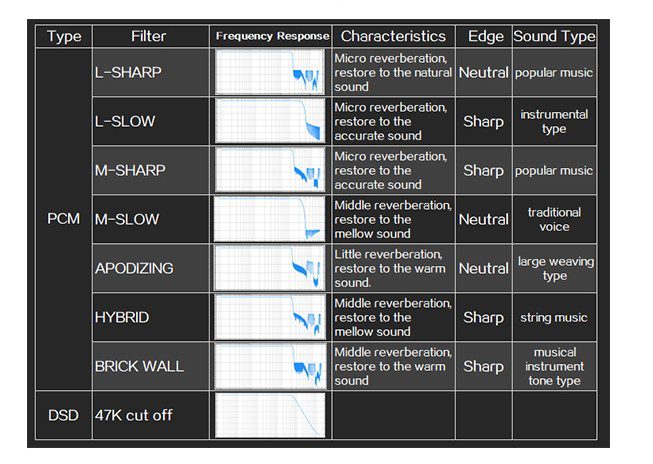 I found that switching filters did have an influence on the sound and M-Sharp was the setting I preferred as it gave the combination of best attack and transients for the genres I typically listen to.
I found that switching filters did have an influence on the sound and M-Sharp was the setting I preferred as it gave the combination of best attack and transients for the genres I typically listen to.
Bass:
Bass is linear with good extension and plenty of punch when called on. The ESS DACs often get accused of being a bit sterile and bass being thin as a result but when paired with the tube output of the Ta-30, the bass has good weight and texture without feeling overly thick from the tubes or slightly thin from the dac’s contribution. Sub-bass rumble is powerful and well controlled, and mid-bass is well defined with good amounts of texture and good dynamics. The Ta-30 does a great job of delivering what it is fed and adding a slight hint of warmth and body to it without getting overly so.
Mids:
As with other models with the 12au7 pre-amp stage, mids are dependent on the tube used. The supplied tubes adds very little warmth in the lower mids which come across as mildly recessed. There is also an upper-mid push (partially dac, partially tube) that lifts vocals a bit. My biggest complaint here is the stock tubes don’t deliver as much detail in the mids as the dac is possible of. Several other tubes in my tube rolling experiments improved on the mids delivered by the Ta-30. This is a case of the tube limiting the rest of the hardware and one of the reasons I strongly recommend tube rolling this amp should you decide to purchase one. If mids are your thing, adding either Brimar CV491s or British Mullard made 12au7s in the pre-amp will help it greatly.
Treble:
While maybe less so than the mids, the treble is still impacted in some measure by which tube is in use. The stock tubes have good extension with some air at the top but stops short of being as well extended as some of the other tubes. The DAC has a very slight upper-mid/lower treble lift that will cut through regardless of tube used, but here again each tube either augments or offsets that lift. Treble is well delivered with plenty of detail and even micro-detail.
Soundstage / Imaging:
I have always thought the job of a good amplifier was to stay out of the way and let the headphone deliver. The Ta-30 when paired with the Ananda or HD800 delivers the massive stage they are known for and imaging is spot on as well so I while I won’t claim the Ta-30 has great stage and imaging, I can say for sure it does little to hinder things that do.
Caveat:
I had hoped this would be resolved before posting my review, but due to Spring festival and Corona Quarantines the engineers at Xduoo have not been available to work with save for a sporadic email. My test unit has an issue that blows fuses, but it does so under odd circumstances. The unit only blows the fuse when it has been in use and is then powered off and left plugged in. Within 15 minutes of power down, the .25A/250V fuse in the power input will have blown. If the unit is unplugged immediately after power down, no such problem occurs. I have had no issues with fuses blowing while in use or powered on and idle, and no issue if the unit is powered off after extended periods of use and disconnected from AC power. I have tried to trace the circuit in my head as it seems the likely culprit is either a cap that discharges when the unit powers off and does so in a way that travels toward the AC input, or leakage of AC current into the unit with the switch in the off position. . I have attempted to put an ammeter on the fuse terminals at power down to see if I could detect current after power-down at the fuse with no success, nor can I find any power inside the unit when plugged in and the switch in the off position. My hope is that the engineers at Xduoo will find the source and remedy it fairly quickly. In the mean time know that the unit is best either left on or unplugged and that purchase of a few extra fuses might be prudent just in case your unit behaves similarly. (I ran the Ta-30 using an APC S10BLK UPS that provides 700Watts of clean power so fluctuations in house current are not part of the issue).
Thoughts / Conclusion:
The Ta-30 represents a big step for Xduoo as the asking price pushes it into territory where it competes head to head with things like the Schiit Lyr, Questyle CMA400i, Topping Dx7 Pro, Gustard A20H, and AudioGD D-28. That is a murderer’s row of mid-fi gear to compete with for sure, so how does the Xduoo stack up? The DAC section is very good and while not quite on par with some of the 9038Pro implementations on the list, it is no slouch either. It may not blow away the competition, but it doesn’t back away cautiously from them either.
Where the Ta-30 really shines is the amplifier section. The Ta-30 has more power than any of the others listed, some by more than double, with 3 Watts output at 32Ohm and nearly 2 Watts measured into a 150Ω load. The Ta-30 is capable of powering things like the He6 that normally require two channel amps. Having tried the same with some of the other models on the list (even using balanced outputs on some) I can say the Ta-30 is more capable than any of them. Combine that kind of output power with the ability to use even high sensitivity cans without marked hiss and even IEMs if used with a -10db offset on the input. I used foobar with -10db set n the pre-amp and was able to use iems with the Ta-30 and still have enough usable volume control to be comfortable. While certainly not the intended use case with that much power available, it is usable in a wide range of situations.
The fuse issue is a little bothersome, but it may be isolated to the unit I have, or possibly it is something that is easily corrected once the engineers return to work. I tend to leave my tube gear on once I am done sorting through which tubes it likes best so while this has been a headache during the tube rolling experiments it will be less so now that I have a set of tubes picked out that I intend to leave in place.
As good as the Ta-30 is out of the box, it can be made even better with the right tubes. For more on that, see my tube rolling article.
-
Sound Quality - 8.5/108.5/10
-
Soundstage - 8/108/10
-
Imaging - 8/108/10
Summary
Pros: Power to spare, very good dac performance, clean sound, tube rolling options abound.
Cons: Price, fuse issue, not a good pairing with super sensitive iems.


